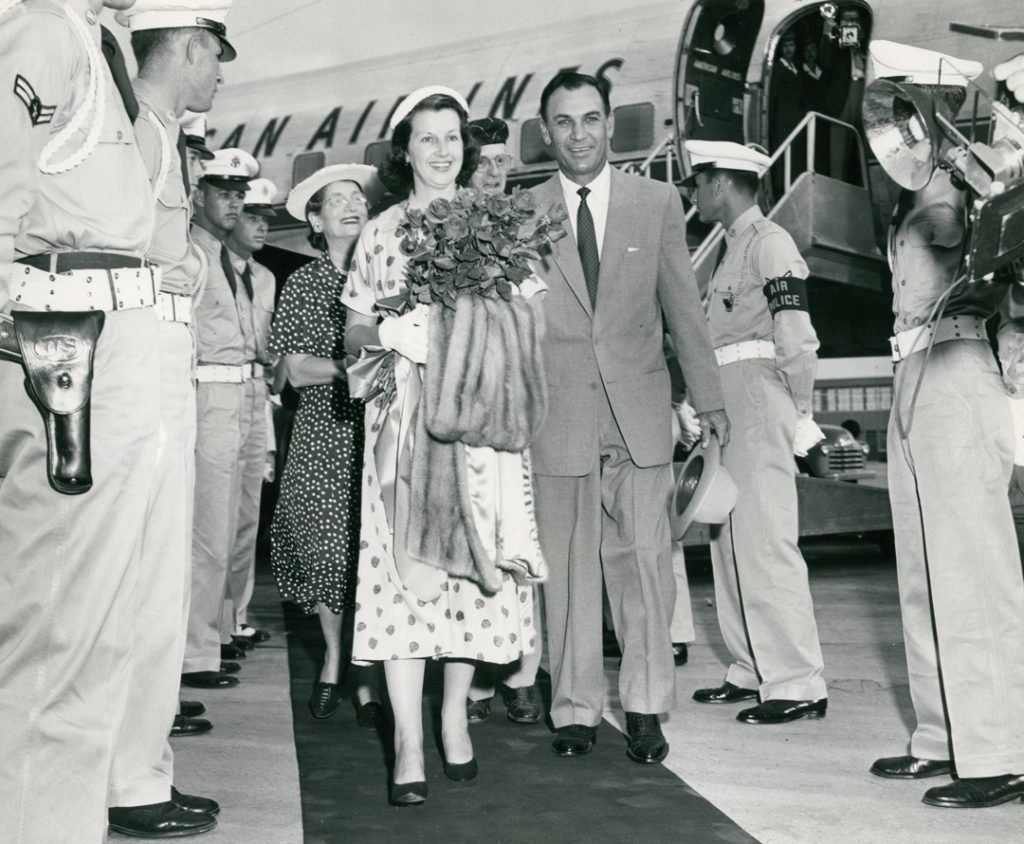
Golfer. Survivor. Legend.
Ben Hogan is undoubtedly one of the best golfers in history. Though fellow golf greats like Sam Snead, Jack Nicklaus, and Arnold Palmer share similarly outstanding performances, Hogan’s greatest achievements were reached in spite of great adversity and cataclysmic injury, through hard work and a dogged dedication to excellence.
On August 13, 1912, Chester and Clara Hogan welcomed their youngest child, William Ben Hogan, into the world. Ben and his parents lived in Dublin, Texas with Ben’s older sister Princess and older brother Royal. But tragedy struck the Hogan home when Ben’s father committed suicide in 1922. Shortly after, the family moved to Fort Worth, forcing the Hogan sons to find work to help support their family. At the age of 11, Ben decided to take a job as a caddy, marking a pivotal moment that sparked his life-long love for the game of golf.
Ten years later, Ben discovered the most important love in his life. While working as a club pro in Cleburne, Texas, he reconnected with Valerie Hogan, a 21 year-old woman whom he originally met in Sunday school as a child. In 1935, Ben and Valerie married, and thus began the iconic Team Hogan.
After serving as a lieutenant in the Army during World War II, Hogan won his first major, claiming the PGA title in 1946. Two years later, he won another PGA as well as his first U.S. Open. From August 1945 – 1949, Ben won an astounding 37 tournaments and was the leading money-winner for the year twice.
"People have always been telling me what I can't do. I guess I have wanted to show them. That's been one of my driving forces all my life."
- Ben Hogan
But a foggy night in West Texas dramatically altered the course of Ben’s life. On this fateful evening in February 1949, Ben was driving home with Valerie following a playoff loss to Jimmy Demaret. Suddenly, a bus pulled out to pass a truck and collided head-on with the Hogans’ Cadillac. Ben threw himself in front of Valerie to protect her, barely saving himself from certain death as the impact pushed the steering wheel to the back seat. Though Valerie left the accident with minor injuries, Hogan endured a broken collarbone, a smashed rib, a double fracture of the pelvis, and a broken ankle. Initially, doctors didn’t know if Hogan would survive or even walk again, let alone resume his work as an elite professional golfer.
Yet Ben Hogan couldn’t be held back. Within three months, he was able to walk 3 holes on a course. By September, he satisfied his responsibilities as Ryder Cup captain in England where the Americans rallied for a 7-5 victory. In December of the same year, only 10 months after the accident, Hogan played 18 holes at Colonial Country Club with head pro Raymond Gafford.
Soon, Ben Hogan’s perseverance began to translate into legendary results. In January 1950, Ben returned to competitive golf at the Los Angeles Open at Riviera Country Club. Five months later – only 16 months after the accident – Ben faced off against Lloyd Mangrum and George Fazio in a three-way 18-hole playoff at the U.S. Open. Spectacularly, Ben seized victory – a remarkable achievement in golf history known as “The Miracle at Merion.” Yet Ben’s work was not complete. Despite pain, lifelong circulation problems, and other physical setbacks, Ben eventually won 5 more majors during the remainder of his extraordinary career.
In 1974 Ben Hogan was inducted into the World Golf Hall of Fame. He remains one of only five players in golf history to hold a title in all four majors. Regardless of his outstanding athletic achievements, Ben Hogan will forever be remembered for his steely-eyed determination in the face of adversity.

